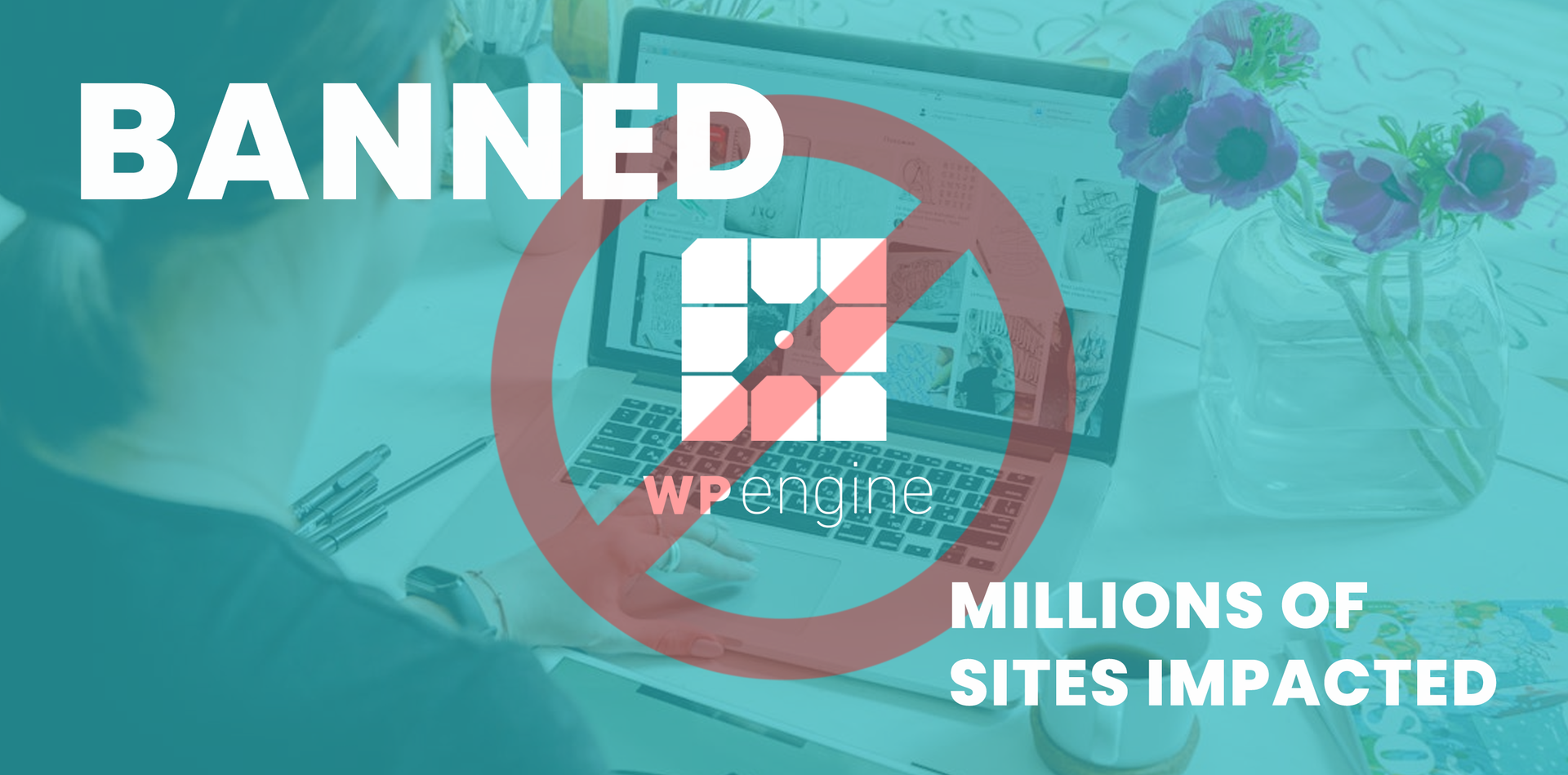The Ultimate Guide to Local SEO: How to Get Found by Customers in Your Area
Back To The BlogWhat is Local SEO and Why It Matters
In today’s digital age, having a strong online presence is critical for businesses of all sizes. For small and local businesses, Local SEO (Search Engine Optimization) is an essential strategy to help potential customers find your business when they’re searching for services in your area. Local SEO focuses on optimizing your business's visibility in local search results, such as “near me” queries and searches for specific locations.
Local SEO matters because it drives highly relevant traffic to your business—people who are actively looking for products or services nearby. In fact, 46% of all Google searches have local intent, and businesses that rank high in local search results can significantly increase foot traffic, phone calls, and sales.
In this guide, we’ll walk you through the key strategies to dominate local search results and ensure your business is easily found by customers in your area. Whether you’re just getting started or looking to refine your existing SEO strategy, this guide will provide practical, actionable tips to help you grow your business.
In this blog:
- Setting the Foundation for Local SEO
- On-Page SEO for Local Visibility
- Building Local Backlinks
- Managing Reviews and Reputation for Local SEO
- Leveraging Social Media for Local SEO
- Mobile Optimization and the Rise of Voice Search
- Tracking and Measuring Local SEO Success
- Creating a Winning Local SEO Strategy
Chapter 1: Setting the Foundation for Local SEO
Local SEO success starts with a strong foundation. Before diving into technical optimizations or content strategies, you need to ensure that the core elements of your online presence are properly set up. This chapter covers two fundamental components: optimizing your Google My Business (GMB) listing and ensuring consistent NAP (Name, Address, Phone) data across the web.
1.1. Claim and Optimize Your Google My Business (GMB) Listing
Google My Business (GMB) is the cornerstone of Local SEO. It’s the primary way Google displays your business information in local search results, including Google Maps. If you haven’t already claimed your GMB listing, it’s the first step toward improving your local visibility.
Steps to Claim and Verify Your GMB Listing:
- Go to Google My Business and sign in with your business’s Google account.
- Search for your business to see if it’s already listed. If it is, claim it. If not, create a new listing.
- Google will send a verification postcard to your business address. Once you receive it, enter the verification code to verify your listing.
Optimizing Your GMB Listing:
Once your business is verified, the next step is optimizing your GMB profile to make sure it’s complete and accurate:
- Correct NAP: Ensure your business name, address, and phone number are consistent with your website and other listings.
- Business Categories: Choose the most relevant primary category for your business, and add additional categories if applicable.
- Hours of Operation: Provide accurate hours of operation, including special hours for holidays.
- Business Description: Write a concise but informative description that includes local keywords.
- Images and Reviews: Upload high-quality images and encourage satisfied customers to leave positive reviews, as these significantly impact your local rankings.
1.2. Consistent NAP Across the Web
Consistency is key when it comes to Local SEO. Google relies on signals from various online sources to verify the accuracy of your business information. Inconsistent NAP data can confuse both search engines and potential customers, leading to lower rankings.
To ensure consistency:
- Audit Your Listings: Make sure your NAP is the same across all major business directories, such as Yelp, Facebook, Bing Places, and local chamber of commerce websites.
- Use Citation Tools: Tools like Moz Local, Yext, or BrightLocal can help you manage and update your business listings across multiple platforms at once.
- Monitor Changes: Periodically check your listings to ensure no one has altered your information, as discrepancies can hurt your rankings.
- By ensuring that your GMB listing is fully optimized and your NAP information is consistent, you’ll be setting the stage for Local SEO success.
Chapter 2: On-Page SEO for Local Visibility
Once you’ve set up the foundational aspects of Local SEO, the next step is to focus on your website. On-page SEO ensures that your site is optimized for both users and search engines, particularly for local searches. This involves using local keywords, structured data, and more to help search engines understand your business’s relevance to local search queries.
2.1. Optimizing Your Website for Local Keywords
Local keyword optimization is at the heart of on-page SEO. It involves strategically incorporating keywords that your target audience is likely to use when searching for businesses or services like yours in their area. Google needs to know not only what you do but also where you do it.
Importance of Local Keyword Research
To get started, you’ll need to perform keyword research to identify which search terms are most relevant to your business and local area. Tools like Google Keyword Planner, Moz, or SEMrush can help you find local search terms with high search volumes.
When researching local keywords, look for:
- Geo-specific keywords: Keywords that include the name of your city or region (e.g., "best coffee shop in [City]").
- Service-related keywords: Phrases that describe what your business offers, combined with location-based terms (e.g., "affordable plumbers near me").
- "Near me" searches: Many people use "near me" in their search queries (e.g., "pizza places near me"). These are growing in popularity due to mobile and voice searches.
Local Keyword Placement in Content
Once you have identified the most relevant local keywords, you need to integrate them naturally into your website. Here’s where to place them:
- Title tags: Include local keywords in the title tags of your pages. The title tag is one of the first things Google and users see, so having a clear, optimized title is critical. Example: "Best Pizza in [City] – [Business Name]."
- Meta descriptions: This is the short description that appears below your title in search results. Use your local keyword in this space to entice users to click on your listing.
- Headings (H1, H2, etc.): Use local keywords in your page’s main heading (H1) and subheadings (H2, H3) to signal relevance. For example, an H1 might be: "The Best Pizza in [City]," and H2: "Why We’re [City]’s Top Choice for Authentic Italian Pizza."
- Content: Incorporate local keywords throughout your content. Write naturally, but ensure that your services and location are clear. Avoid keyword stuffing, as this can hurt your rankings. Mentioning local landmarks, neighborhoods, or areas you serve is also beneficial.
- Image alt text: Optimize the alt text of your images with local keywords. Example: "Image of a pizza at [Business Name] in [City]."
- URL structure: If possible, include local keywords in your URLs. For example: www.example.com/[city]-best-pizza.
By optimizing these elements, you’ll improve the chances of your site ranking higher when people search for local services, driving more traffic and conversions.
2.2. Local Schema Markup (Structured Data)
Schema markup, or structured data, is a powerful yet underutilized SEO tool that helps search engines understand specific details about your business. Implementing local business schema on your website provides Google with important information like your business name, address, phone number, and operating hours. This helps improve how your business appears in local search results, especially in rich snippets and knowledge panels.
What is Schema Markup?
Schema markup is a form of microdata that you add to your website’s HTML code to help search engines understand your content better. By using structured data specific to local businesses, you’re telling Google that your business serves a particular area, making it more likely to appear in local search results.
Local schema markup can enhance your appearance in search results by:
- Displaying rich snippets (like reviews, ratings, and contact info) directly in search results.
- Helping voice assistants like Google Assistant or Alexa retrieve your business info when users perform voice searches.
Implementing Local Business Schema Markup
To implement local schema markup on your website, follow these steps:
- Choose your schema type: For local businesses, you’ll use the "LocalBusiness" schema type. You can also get more specific depending on your industry, like "Restaurant," "Dentist," or "Plumber."
- Generate the schema markup: Use tools like Google’s Structured Data Markup Helper to create the code for your business. It will walk you through adding fields like your business name, address, hours, and other relevant information.
- Add the markup to your website: After generating the code, you’ll need to embed it in the appropriate pages on your site. This typically goes in the HTML header or body of your website’s homepage or contact page.
- Test your structured data: Use Google’s Rich Results Test or the Schema Markup Validator to ensure your markup is correctly implemented and error-free.
Structured data can significantly improve your business’s visibility in local search by helping Google show more relevant and detailed information to users. It’s an important piece of on-page SEO for local businesses.
Chapter 3: Building Local Backlinks
Backlinks, or inbound links from other websites to yours, are an important ranking factor for both traditional and local SEO. However, local backlinks have a unique focus: they need to come from other businesses, organizations, or publications in your local area.
3.1. Why Backlinks Are Critical for Local SEO
Backlinks are considered a vote of confidence from other websites. The more high-quality backlinks you have, the more search engines like Google see your site as trustworthy and authoritative. For local businesses, having backlinks from local websites signals to Google that you’re a relevant player in your community.
3.2. Strategies to Earn Local Backlinks
There are several ways to earn backlinks from other local businesses and organizations. Here are a few effective strategies:
- Partner with Local Businesses: Collaborating with local businesses is a great way to cross-promote your services and gain backlinks. For example, you could partner with a local café and offer a discount for customers who visit both locations. You can both promote each other’s websites with links.
- Sponsor Local Events or Charities: Sponsoring local events, such as community fairs, sports teams, or charity runs, often comes with the opportunity for a backlink on the event’s website. It’s a win-win: you support your community while improving your SEO.
- Get Involved with Local Media: Reach out to local newspapers, blogs, and radio stations to share news about your business. Whether you’re launching a new product, hosting an event, or supporting a cause, getting a mention from local media can also lead to backlinks.
- Leverage Local Influencers: Local bloggers, social media influencers, and community leaders can provide valuable backlinks if they write or post about your business. Offer them a free product or service in exchange for an honest review or mention on their site.
By focusing on local relationships and collaborations, you’ll be able to build a solid base of local backlinks that boost your website’s authority and local search rankings.
Chapter 4: Managing Reviews and Reputation for Local SEO
Online reviews play a significant role in how your business ranks in local searches. Not only do reviews help build trust with potential customers, but they are also an important ranking factor in Google’s local search algorithm.
4.1. The Impact of Reviews on Local Search Rankings
Google uses customer reviews to gauge the quality of your business. Businesses with more reviews—especially positive ones—are more likely to rank higher in local search results. Additionally, reviews provide social proof that can convince potential customers to choose your business over a competitor.
4.2. How to Get More (and Better) Customer Reviews
Getting more reviews can be as simple as asking your customers. Here are some strategies for encouraging customers to leave feedback:
- Ask in Person: If you have a physical location, train your staff to ask satisfied customers to leave a review on Google, Yelp, or Facebook.
- Follow Up with Emails: After a purchase or service, send a follow-up email asking for a review. Include a direct link to your Google My Business page to make it easy for them.
- Use Signage: Post signs in your store, on receipts, or at checkout asking customers to leave a review.
4.3. Handling Negative Reviews
Even with the best service, negative reviews happen. The key is to respond professionally and use the feedback to improve your business. Here’s how to handle them:
- Respond Quickly: Address negative reviews as soon as possible to show you care about your customers’ experiences.
- Stay Professional: Keep your response polite, even if the review is unfair. Apologize for any inconvenience and offer to make it right.
- Use It as an Opportunity: View negative reviews as a way to improve. If multiple customers mention the same issue, consider adjusting your services or processes.
Managing reviews properly not only helps with customer satisfaction but can also positively influence your local SEO performance.
Chapter 5: Leveraging Social Media for Local SEO
While social signals (likes, shares, comments) are not a direct ranking factor for Google, having an active social media presence can still impact your Local SEO. It can help build brand awareness, drive traffic, and indirectly influence your local rankings.
5.1. The Role of Social Signals in Local SEO
When your business is active on social media, it can generate engagement from local users, which can, in turn, send positive signals to Google about your business’s relevance in the area. Shares and interactions on platforms like Facebook, Instagram, and LinkedIn can also drive traffic to your website, which boosts SEO.
5.2. Optimizing Your Social Media Profiles for Local SEO
Here are some ways to ensure your social media profiles help with your Local SEO efforts:
- Use Local Keywords: Just like with your website, make sure to use local keywords in your social media bios, descriptions, and posts.
- Consistent NAP: Ensure your business name, address, and phone number are consistent across all social media profiles.
- Location Tags: Use location tags in your posts, especially on platforms like Instagram and Facebook, to make it clear where your business is located.
- Encourage Check-ins: Motivate customers to check in to your business on social media platforms. This helps increase your business’s visibility in local searches.
By maintaining an active, optimized presence on social media, you’ll increase your local reach and indirectly improve your Local SEO.
Chapter 6: Mobile Optimization and the Rise of Voice Search
Mobile and voice search are two key trends that are shaping how people find businesses online. With the rise of mobile-first indexing and voice-activated assistants, optimizing for these search methods is essential for Local SEO.
6.1. The Importance of Mobile Optimization for Local SEO
As of 2024, over 78% of local mobile searches result in an offline purchase. With more people using smartphones to search for local businesses, it’s crucial that your website is fully optimized for mobile.
Here are some best practices for mobile optimization:
- Mobile-Friendly Design: Use responsive web design to ensure your site adapts to all screen sizes.
- Fast Loading Speed: Compress images, enable browser caching, and reduce unnecessary code to speed up your mobile site.
- Easy Navigation: Make sure buttons, links, and forms are easy to use on small screens.
6.2. Voice Search and Its Growing Impact on Local SEO
With more people using devices like Google Home, Alexa, and Siri, voice search is becoming a key part of local search behavior. Voice queries tend to be more conversational and longer than typed searches, so optimizing for them requires a different approach.
Here’s how to optimize for voice search:
- Focus on Question-Based Keywords: Many voice searches are in the form of questions (e.g., "Where is the best pizza place near me?"). Include these types of queries in your content.
- Optimize for Local Intent: Voice searches often have a local intent, so make sure your content highlights your location and services.
- Use Structured Data: Schema markup helps voice search devices find relevant information about your business more easily.
By optimizing your site for both mobile users and voice search, you can capture a significant portion of local search traffic.
Chapter 7: Tracking and Measuring Local SEO Success
To ensure your Local SEO efforts are paying off, it’s important to track and measure your results. By monitoring key metrics, you can make data-driven decisions and continuously improve your strategy.
7.1. Key Metrics to Track for Local SEO
Here are some of the most important metrics to monitor:
- Google My Business Insights: GMB offers valuable insights into how many people viewed your listing, clicked to call, or requested directions.
- Organic Traffic: Use Google Analytics to track how much traffic your site is getting from local searches.
- Keyword Rankings: Track your local keyword rankings using SEO tools like Moz, Ahrefs, or SEMrush.
- Reviews: Keep an eye on the number of reviews and your average rating across platforms.
7.2. Tools for Managing and Tracking Local SEO Performance
Here are a few tools that can help you monitor your Local SEO efforts:
- Google Analytics: Track website traffic and user behavior.
- Google Search Console: Monitor keyword performance and indexing issues.
- Moz Local: Track local keyword rankings and citation consistency.
- BrightLocal: Monitor reviews, local rankings, and citations across multiple platforms.
If you're a Siphon Sites customer, we have some of these tools built right in, but we still recommend the two Google options for a deeper dive.
Creating a Winning Local SEO Strategy
Local SEO is an ongoing process that requires consistent attention and optimization. From claiming your GMB listing to earning local backlinks, there are numerous strategies that can help your business rank higher in local search results.
The key is to start with a strong foundation—optimized listings, a mobile-friendly site, and accurate NAP data—and then build on that with ongoing efforts like content optimization, review management, and link building. By staying active in your community, both online and offline, you’ll not only improve your search rankings but also build lasting relationships with your customers.
If you need expert help creating a customized Local SEO strategy for your business, reach out to us here at Siphon Strategy. We’re here to help you attract more local customers and grow your business!
Originally Posted On: October 16, 2024 By: Chris Paul




